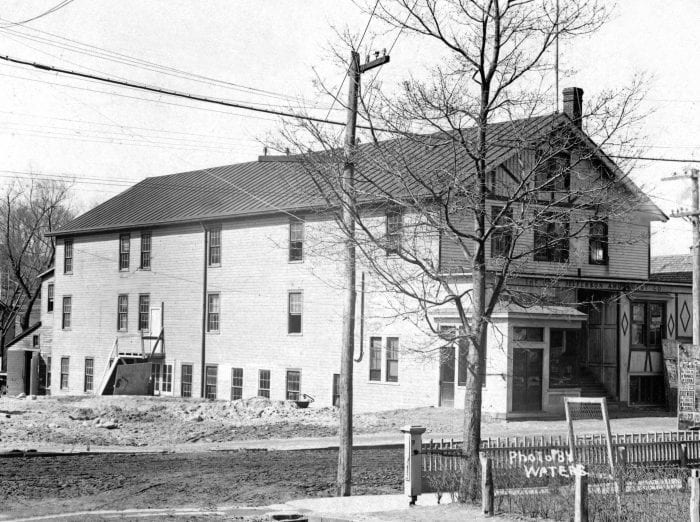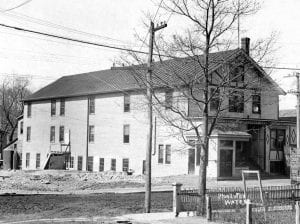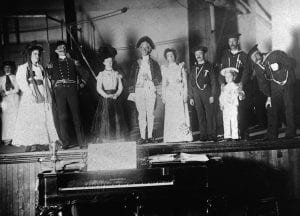Hometown History: Port Jefferson’s Athena Hall

By Kenneth Brady
In an 1873 column appearing in the weekly Long Island Leader, the newspaper’s publishers bemoaned that Port Jefferson lacked a suitable public hall for lectures, exhibitions, shows and parties.
Lamenting that the village did not have a meeting place to accommodate a sizeable audience, the Leader called upon an investor to build a “creditable” hall in Port Jefferson for assemblies and performances.While waiting for a public-spirited person to construct a large hall in the village, its residents got together at some of Port Jefferson’s smaller venues.
Typical of these settings, Lee’s Hall occupied the top floor of John S. Lee’s tin shop on what is now Port Jefferson’s East Broadway. Dances, suppers, cake walks and sociable’s were held in the building.
Bayles Hall, located in rooms above the second Bayles Chandlery on today’s East Broadway, was another popular gathering place. During one evening, the audience enjoyed a play based on Uncle Tom’s Cabin.
Though horribly cramped, Henry Hallock’s Hall on Main Street featured vocal groups, magicians and outside speakers.

Besides these three halls, other meeting places in Port Jefferson were important to the village’s cultural and social life. Tom Thumb performed at Smith’s Hotel, exhibits were displayed at the local schoolhouse and, in a unique use of the space, concerts were held in John R. Mather’s lumber shed.
Port Jefferson’s houses of worship also hosted a variety of events. Swiss bell ringers played at the Baptist Church, minstrels entertained at the Presbyterian Church and temperance lecturers held forth at the Methodist Church.
Villagers continued to get along without a large hall until 1888 when construction on a spacious meeting house finally began. Fifteen years had passed since the Leader claimed that the demand for a public hall was “growing rapidly” in Port Jefferson. What could explain the delay?
The financial Panic of 1873 and its aftermath brought tight money, sluggish sales and hard times to Port Jefferson, perhaps dampening any enthusiasm for the venture.

As the economy improved, there was renewed interest in the project. L. Beecher Homan, publisher of the Port Jefferson Times, grocer D. Oliver Petty, who’s building also housed the Times, and insurance agent Albert T. Norton were among the investors who financed the hall’s construction.
Their timing could not have been better. During the 1880s, Port Jefferson began transitioning from a shipbuilding center to a vacationland. With the influx of tourists, businessmen could turn a profit in entertaining visitors on top of the money to be made in satisfying the needs of villagers.
The New Hall, later named Athena Hall, was located on the west side of Main Street and opened on Thursday evening, Sept. 20, 1888, following a parade. The night’s playbill featured local talent.
The public entered the New Hall using a broad staircase leading up to a wide veranda. The frame building, which purportedly could seat 1,000 people, had two levels.
The upper floor included the main hall, a U-shaped balcony, the stage, a space for the orchestra, dressing and property rooms and a committee room. The lower floor contained a coal room and a hot air furnace, pantry, dining room and lower hall.
Remodeled extensively throughout its storied history, what was once Athena Hall has been used as a playhouse, graduation site, movie theater, community center, polling place, machine shop, steam laundry, roller skating rink, radio and television sales store, dance hall and cabaret.
Known today as Theatre Three, the 133-year-old building is a Port Jefferson treasure.
Kenneth Brady has served as the Port Jefferson Village Historian and president of the Port Jefferson Conservancy, as well as on the boards of the Suffolk County Historical Society, Greater Port Jefferson Arts Council and Port Jefferson Historical Society. He is a longtime resident of Port Jefferson.






